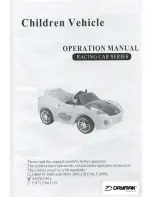
CSP-HE/HS-1
ROTORCRAFT FLIGHT MANUAL
General
MD 500
(Models 369HE/HS/HM
)
Revision 6
1-10
New and revised publications are available through MDHI Subscription Ser−
vice. Further information may be obtained by contacting:
MD Helicopters, Inc.
M615−G048
4555 E McDowell Rd
Mesa, AZ 85215−9734
or your local Service Center, Distributor, or Sales Company.
All persons who fly or maintain MDHI helicopters are urged to keep abreast of
the latest information by using the subscription service.
1-1 1. DESIGN AND CONSTRUCTION
369HE/HS differences:
Except for interior trim upholstery and floor coverings, equipment furnish−
ings, paint finish and other details, the 369HS and 369HE are essentially
identical to the basic helicopter configuration. Normally, the 369HS has the
standard trim package and the 369HE has the executive trim package. Fur−
nishing variations between models include a passenger/cargo compartment
folding table, passenger steps, and different ashtray locations and passen−
ger/cargo convenience panels.
The MD 500 helicopter is a turbine powered, rotary−wing aircraft constructed
primarily of aluminum alloy. The main rotor is a fully articulated four−bladed
system, while the tail rotor is a two−bladed semi−rigid type. Power from the
turboshaft engine is transmitted through the drive shafts to the main and tail
rotor transmissions. An overrunning (one−way) clutch, placed between the en−
gine and main rotor transmission, permits free−wheeling of the rotor system
during autorotation.
The airframe structure is egg−shaped and provides very clean aerodynamic
lines. The rigid, three−dimensional truss type structure increases crew safety
by means of its roll bar design, and by reduction in the number of potential
sources of failure. The airframe structure is designed to be energy absorbing
and fails progressively in the event of impact.
The fuselage is a semi−monocoque structure that is divided into three main
sections. The forward section is comprised of a pilot compartment and, directly
aft separated by a bulkhead, a passenger/cargo compartment. The pilot com−
partment is equipped with seats for the pilot and either one or two passengers.
A canopy of transparent tinted acrylic panels provide excellent visibility. The
left seat in the pilots compartment (looking forward) is the pilot’s seat (com−
mand position); in special military version helicopters, the pilot’s seat is on the
right side.
The MD 500 requires a minimum crew of one pilot seated on the left side of
the compartment. The passengers sit to the right, abreast of the pilot. Seat
















































